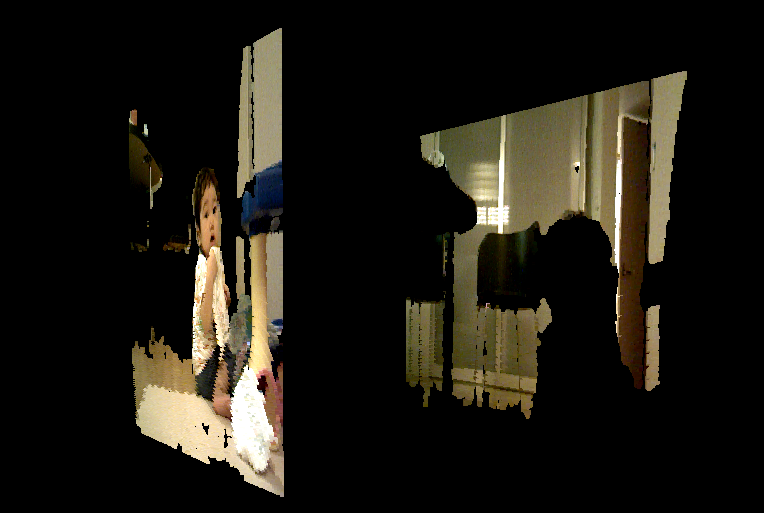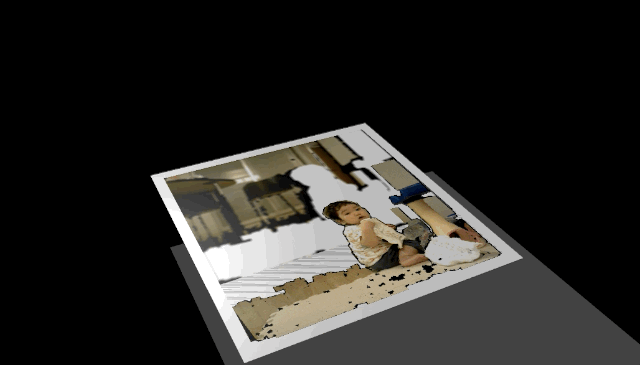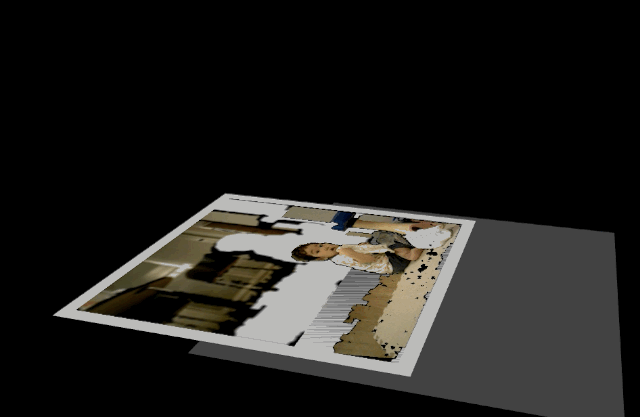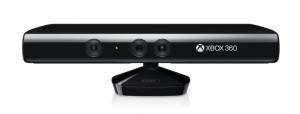 As 3D photography becomes cheaper and more appealing to average users, people are finding all sorts of new ways to use the technology. Primarily it tends to be used in industrial and business applications. However, in the last few years makers have been turning things like the XBox Kinect into a makeshift 3D scanner, or an inexpensive way to simply capture some 3D data. But the problem with 3D photos is a simple one: what exactly do you do with them? You can’t really print a 3D photo out, and unless you have a digital picture frame they’re certainly not going to decorate your desk or photo wall at home. Turning them into 3D printable objects is a possibility of course, but it’s expensive and there are only so many memories that you will have room to display in your home.
As 3D photography becomes cheaper and more appealing to average users, people are finding all sorts of new ways to use the technology. Primarily it tends to be used in industrial and business applications. However, in the last few years makers have been turning things like the XBox Kinect into a makeshift 3D scanner, or an inexpensive way to simply capture some 3D data. But the problem with 3D photos is a simple one: what exactly do you do with them? You can’t really print a 3D photo out, and unless you have a digital picture frame they’re certainly not going to decorate your desk or photo wall at home. Turning them into 3D printable objects is a possibility of course, but it’s expensive and there are only so many memories that you will have room to display in your home.
Blogger and maker Kawamoto Ken was dealing with this very dilemma when he came up with an idea to use 3D point cloud data to auto generate popup cards. Using his Asus Xtion to collect the 3D data, Ken developed an algorithm that easily converts data captured with an off-the-shelf 3D camera into what is essentially a 2D image. Once the 2D image is printed out, parts of the photo just need to be cut out and popped into position. The finished product feels like a 3D image that can conveniently be folded up as flat as a 2D image. They can easily stored away, put in a picture book or even flattened and mailed like a card.
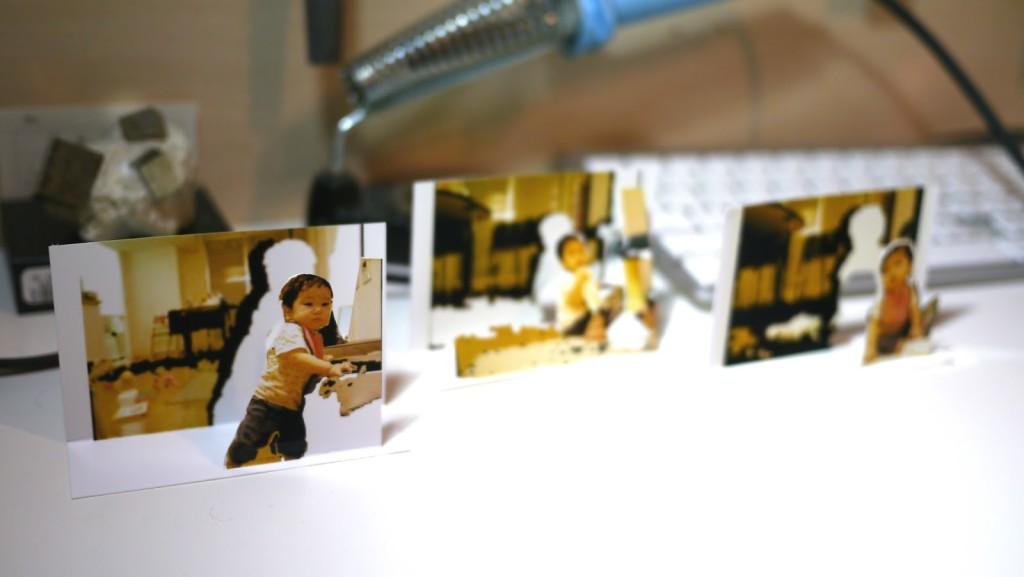 There are other ways to create a pop-up picture that doesn’t involve using complicated 3D cameras, but none of them are quite as fun as Ken’s method. And there are certainly ways to turn a 2D image into a 3D image, but the quality isn’t always going to be the same, and the process isn’t any less complicated than Ken’s. Granted, not everyone has access to a 3D camera like a Kinect or an Xtion, but those are both relatively inexpensive options. Go ahead and look up some of the other few 3D cameras available, if you have $600 to spend on a FinePix 3D go for it. But a Kinect can usually be purchased from eBay for pretty cheap, and will work almost as well.
There are other ways to create a pop-up picture that doesn’t involve using complicated 3D cameras, but none of them are quite as fun as Ken’s method. And there are certainly ways to turn a 2D image into a 3D image, but the quality isn’t always going to be the same, and the process isn’t any less complicated than Ken’s. Granted, not everyone has access to a 3D camera like a Kinect or an Xtion, but those are both relatively inexpensive options. Go ahead and look up some of the other few 3D cameras available, if you have $600 to spend on a FinePix 3D go for it. But a Kinect can usually be purchased from eBay for pretty cheap, and will work almost as well.
“As a parent, one of the things I like about Owning a depth camera (like a Kinect or an Asus Xtion) is that you CAN Take 3D photos of your child. Taking 3D photos of your family on occasions is highly recommended. They’re great ways to look back on old memories,” said Ken on his blog.
Ken is kind enough to walk his readers through the process of making pop-up photos, and explains each step that he takes along the way. Obviously he suggests taking a 3D photo of something, either a child, a pet or something else that you want to pop out of your picture. Use the 3D camera data to cluster the 3D points into several “layers” that will be the points on the image that the algorithm will pop up.
You will need to spend a little time reorganizing the points into planes and Ken’s method was to cluster the points by their distance from the camera. By using a k-means clustering algorithm like the one Ken wrote, the user specifies which points will be clustered with each other. Then the 3D image can be turned into a small, manageable number of layers rather than the dozens that would typically be present in a 3D photo. At this point the remaining layers can be merged into a single card. The process that Ken created adds a series of red lines to each photo. The red lines act as a guide, showing where on the printed picture users need to cut in order to create the desired 3D effect.
“Sure you could try 3D printing them,” Ken notes, “but they’re still expensive (or really low resolution), and they still don’t have the casual feel of printing out photos on paper. (They take up storage space, you can’t keep one in your wallet, and they certainly can’t be sent in an envelope.)”
The pop-up process isn’t perfect obviously, the relatively low resolution of most 3D cameras is going to make the picture quality suffer a little bit. But the three-dimensional images are still a clever and unique way to make a picture a little more special and interesting. There is a lot of potential here for some real creativity. Just imagine mounting the 3D popup pictures in a shadow box, and it is even possible to make these with three layers for extra 3D goodness. Ken will eventually either release the source code for his algorithm or make it available as a simple web service. But for now, if you’re interested in making your own popup cards with his process you can simply contact him via his blog and he’ll provide you with the code.
What are your thoughts on this innovative method of making cards? Let’s hear your thoughts in the 3D Printed Popup Cards Forum thread on 3DPB.com.
Subscribe to Our Email Newsletter
Stay up-to-date on all the latest news from the 3D printing industry and receive information and offers from third party vendors.
You May Also Like
3D Printing Unpeeled: New Arkema Material for HP, Saddle and Macro MEMS
A new Arkema material for MJF is said to reduce costs per part by up to 25% and have an 85% reusability ratio. HP 3D HR PA 12 S has been...
3D Printing News Briefs, January 20, 2024: FDM, LPBF, Underwater 3D Printer, Racing, & More
We’re starting off with a process certification in today’s 3D Printing News Briefs, and then moving on to research about solute trapping, laser powder bed fusion, and then moving on...
3D Printing Webinar and Event Roundup: December 3, 2023
We’ve got plenty of events and webinars coming up for you this week! Quickparts is having a Manufacturing Roadshow, America Makes is holding a Member Town Hall, Stratafest makes two...
Intuitive Machines Debuts $40M Hub for Lunar Ambitions and 3D Printing Tech
Best known for its pioneering work in lunar exploration and its development of the Nova-C lunar lander, Intuitive Machines (Nasdaq: LUNR) has marked yet another significant milestone. The leading space...



